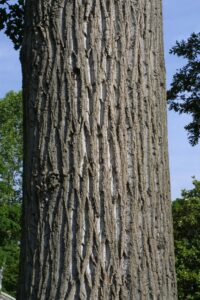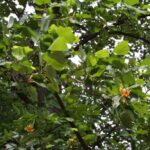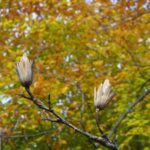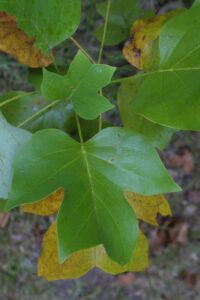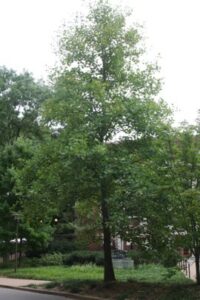Botanical Name:
Liriodendron tulipifera
Family Name:
Magnoliaceae
Description:
Tulip tree is the state tree of Indiana. It is the tallest deciduous tree in all of eastern North America, topping out at well over 100 feet with a straight trunk and a pyramidal to conical crown. The bark of younger trees is an even gray with shallow whitish fissures, whereas older trees have darker trunks with deeper fissures. Tulip tree is easily identified in the summer by the uniquely symmetrical shape of its leaves with pointed basal and terminal lobes.
Size:
70-100’ tall; 30-50’ spread
Habitat and Range:
Tulip tree is native to most of the eastern United States from Indiana and southern Michigan to Connecticut and south all the way to Florida. It is a mid-successional species of mesic woodlands, protected hillsides, and wooded valleys.
Attributes:
The 2-inch flowers resemble tulips in the shape, size, and number of their petals. Each of the six yellow-green petals has a bright orange patch at its base. Numerous pale-yellow stamens surround the elongated cluster of pistils in the center of the flower. Pistils mature into dry, winged fruits, which break off one by one to spin away in the wind. Tulip trees grow quickly and thus have weaker wood than some of our other large hardwood trees. This makes them somewhat susceptible to limb breakage in high winds or from ice storms.
Wildlife Value:
Nectar from the large flowers attracts bees, flies, hummingbirds, and some beetles. Songbirds, such as goldfinch, chickadee and cardinals eat the seeds, as do a number of small mammals. Larvae of several moth and butterfly species feed on the leaves and wood. Yellow-bellied sapsuckers drill through the bark to get at the sap, which can later also draw hummingbirds.
Did you know?
- Tulip tree is also the state tree of Kentucky and Tennessee.
- Native Americans made good use of the tall straight trunks by constructing entire canoes from a single log. The largest specimens of tulip tree can be found in the protected cove forests of the southern Appalachian Mountains. The tallest of these, at over 190 feet, is found in the Great Smoky Mountains National Park.
Benefits to Our Community (based on carbon dioxide sequestered, storm water runoff avoided, and air pollution removed each year):
Over the next 15 years, this tree will give back $90 worth of benefits to our community.
